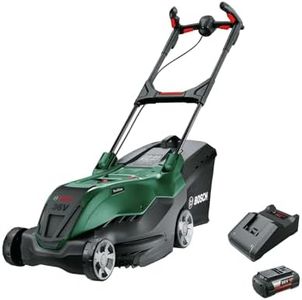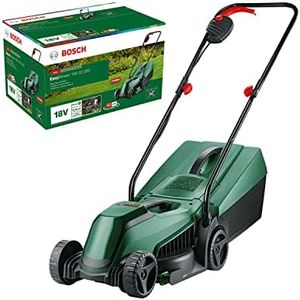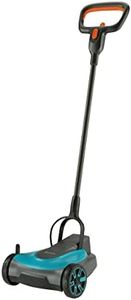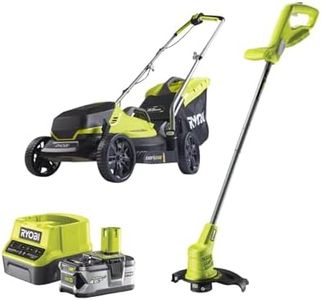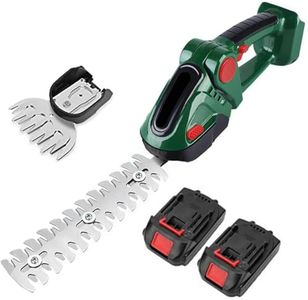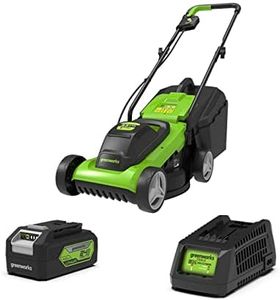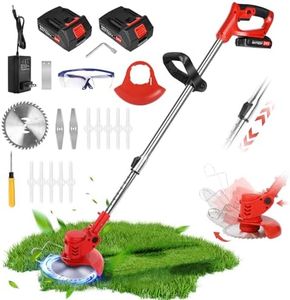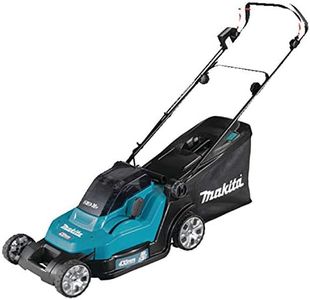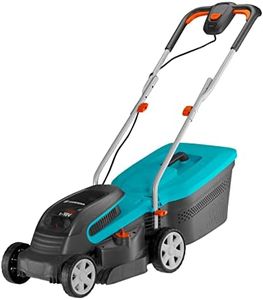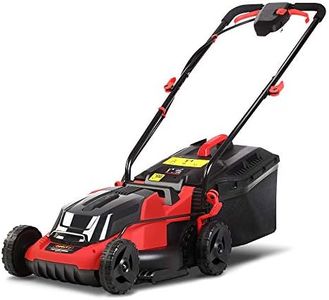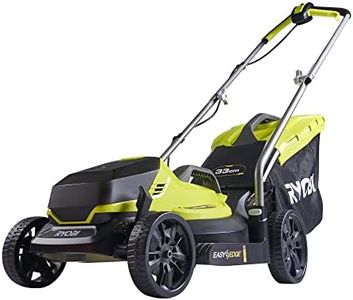We Use CookiesWe use cookies to enhance the security, performance,
functionality and for analytical and promotional activities. By continuing to browse this site you
are agreeing to our privacy policy
10 Best Battery Lawn Mower
From leading brands and best sellers available on the web.Buying Guide for the Best Battery Lawn Mower
Choosing a battery lawn mower can make yard work much easier and more pleasant. These mowers are quieter, require less maintenance than gas mowers, and there are no fumes. The main idea is to find a mower that matches the size of your lawn and the way you like to mow. Think about how long and how often you mow, how much strength you want to use, and whether you want extra features like mulching. By understanding the core features, you’ll be able to pick a battery mower that keeps your lawn looking great with minimal hassle.Battery Voltage and CapacityThe battery voltage, measured in volts (V), and capacity, measured in ampere-hours (Ah), tell you how powerful the tool is and how long it can run before needing a recharge. Higher voltage generally means more mowing power, which is useful for tough or thick grass. Higher capacity means the mower can run longer on a single charge. Small lawns can usually be handled with lower voltage (around 18V to 36V) and lower capacity, while bigger or denser lawns benefit from higher voltage (40V and up) and bigger batteries. If you want to avoid stopping to recharge or swap batteries, look for a mower with a capacity that matches how long you usually mow.
Cutting WidthThe cutting width is the width of the grass strip the mower cuts in a single pass. Wider cutting widths—usually between 16 and 22 inches—let you mow faster because you cover more ground. However, wider mowers can be heavier and harder to push, especially in tight spots or if you have obstacles in your yard. For smaller, more complex lawns, a narrower cutting width helps with maneuverability, while wider widths are a time-saver for larger, open lawns.
Run TimeRun time is how long the mower can operate on a single battery charge. It can range from 20 minutes to an hour or more, depending on the battery and the way you mow. Lawns that are large or have thick grass demand longer run times. If your mowing sessions usually take a while, look for mowers with longer run times or consider a spare battery. For quick, straightforward mowing of a small area, shorter run times are usually enough.
Charging TimeCharging time is how long it takes to recharge the battery after you run it down. Some batteries recharge in under an hour, while others might take a few hours. If you need to mow frequently or finish your lawn in one go, a shorter charging time is more convenient. If you don’t mind waiting or only mow occasionally, longer charging times may be less of a concern.
Weight and ManeuverabilityA mower’s weight affects how easy it is to push and turn, especially on uneven ground or around obstacles. Lighter mowers are easier to handle and store, while heavier models might feel sturdier but require more effort to operate. If you have hills or lots of landscaping, you’ll likely prefer a lighter or self-propelled mower. For flat, open lawns, weight is less of a factor.
Grass Disposal OptionsBattery mowers usually offer several ways to handle clippings: bagging, side discharge, and mulching. Bagging collects the grass for easy disposal, side discharge sprays it back onto the lawn, and mulching finely chops the grass and lets it feed your soil. Choose the method that matches your lawn health goals and how tidy you like your yard to look. Some mowers offer all three options, allowing you to switch based on your needs.
Height AdjustmentThis lets you set how short you want to cut your grass, usually by moving a lever or knob. Different types of grass and seasons may require different cutting heights. A mower with easy, flexible height adjustment makes it simple to keep your lawn healthy. If you want more precision or mow at different heights, look for a model with a wider range and easy controls.
